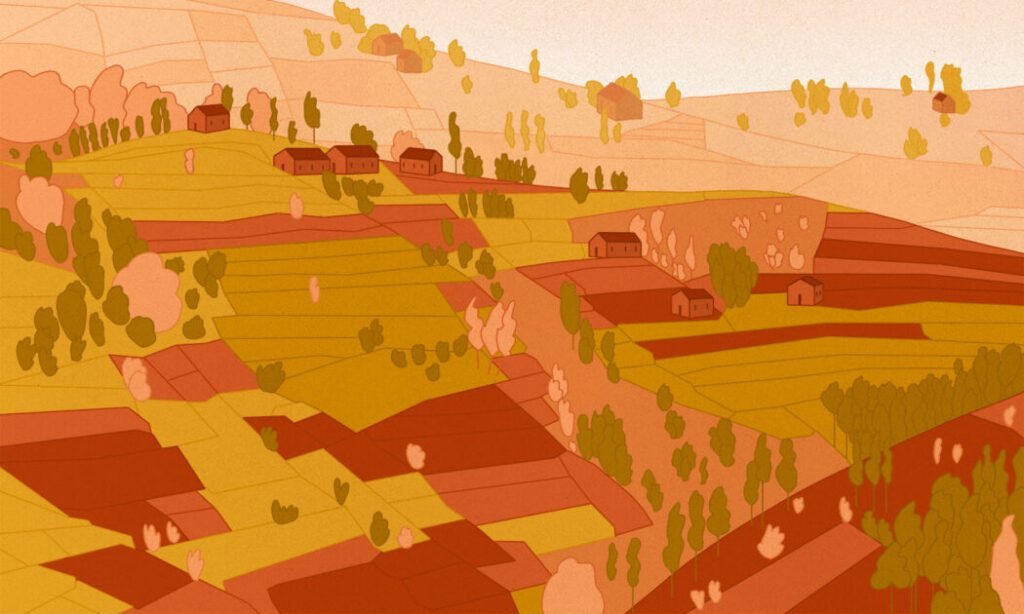But many of those headlines were misleading. In poor countries, around 80 percent of all calories come from grains. Most important is rice, which accounts for 27 percent of per capita caloric intake in the developing world and is the main staple in Asia. In countries like Myanmar and Cambodia, rice makes up 80 percent of calories.
Maize is the most important subsistence cereal in Africa. About 30 percent of the world’s maize is consumed by African countries, with people in Malawi, Lesotho, and Kenya consuming an average of 90–180 kg (198–397 lb) per year. Wheat, which is the second most important cereal worldwide, is relatively unimportant in poor countries. For example, annual per capita consumption of wheat is only about 17 kg in sub-Saharan Africa.
Now, consider Ukraine’s contribution to the global food supply. In 2020, that are exported very little rice, 18 million tons of wheat and 28 million tons of corn. It was the fifth largest wheat exporter after Russia (37.3 million tonnes), the United States (26 million), Canada (26 million) and France (19.8 million). and the fourth largest maize exporter, after the US (52 million tons), Argentina (37 million tons) and Brazil (34 million tons).
The loss of Ukrainian wheat and maize should not in itself cause food insecurity in poor countries because production and exports from other countries may increase.
Consider corn. Poor countries that rely on maize produce most of it domestically, and very little of what they import comes from Ukraine. For example, in 2020, Kenya imported only 11,818 tons from Ukraine. Shortfalls of this size should be relatively easy to cover by other producers, especially since most corn is not needed for human survival. Globally, only 15 percent of all the maize produced in the world is consumed as food. In the US — in the world largest corn producer— 10–12 million tonnes per year are used for production sweetener.
Other producers should also be able to compensate for the loss of Ukrainian wheat. Past production shows that many countries are currently not at full capacity. For example, the increase in US wheat exports from recent levels 26 million tonnes to the 1981 peak of 44 million tonnes would more than offset the loss of all of Ukraine wheat exports.
Its danger fertilizer The shortages have also made headlines because it could reduce supply and increase the price of food worldwide. But Ukraine only represents 0.8 percent of global fertilizer exports.
Overall, poor countries should not be significantly affected by the loss of Ukrainian agricultural products. But that doesn’t mean food insecurity concerns are overblown. The problems are simply different and more complex than the titles imply.
Food insecurity has been steadily worsening for years. In low-income countries, the proportion of people suffering from a lack of adequate high-quality nutrition increased from approx 13 percent in 2015 to 26 percent in 2019, due to the interplay of factors such as climate change, institutional failure and regional armed conflict. Associating the problem solely with Russia’s war in Ukraine risks creating a false assumption that it can be fixed or significantly improved by ending the war in Eastern Europe.
The Russian invasion of Ukraine may indeed cause problems in global food markets. It can reduce global food supplies in the short term, especially when they exist disorders in shipping lanes and access to ports. Fortunately, recent negotiations show that these problems can be fixed. In addition, the 850 million tons of world grain reserves, 25% of which are held by the US and the European Union, can also be used to address temporary deficits.
The biggest long-term risk is that Russia—not Ukraine—will reduce exports. accounts of Russia 19 percent of world wheat exports and 15 percent of fertilizer exports. Exports could fall due to war, bad weather or an economic crisis that derails production. It could back down for political reasons, such as a Russian play to leverage its market power, as it did with natural gas. Instead, Ukraine and its allies may seek to increase economic pressure on Russia by demanding a ban on its agricultural exports, which have so far exempt from trade sanctions. Political hostilities are likely to continue even after the armed conflict ends.
Given these risks, a logical response for the US and its agriculturally productive allies is to increasing crop production and to increase reserves. The increase in production allows the expansion of grain stocks without reducing world supplies. and with larger stocks, small amounts can be easier was released to smooth out temporary deficits. These policies also send a strong message to farmers to maintain their production capacity, which will help ensure the ability to pursue even greater production should the need arise.
The increase in production and stocks will ease war disruptions in the short term and, over time, reduce global dependence on Russian agricultural exports, giving Ukraine’s allies more room for political maneuvering. For poor countries facing the growing threat of chronic food insecurity, these policies provide insurance against mass starvation.
The food crisis caused by the Russia-Ukraine war highlights acute food insecurity challenges. A closer look shows that the problems are much deeper than the current war and that the global food system urgently needs to be made more resilient for political and humanitarian reasons.
*
This article originally appeared on Project Syndicate.
